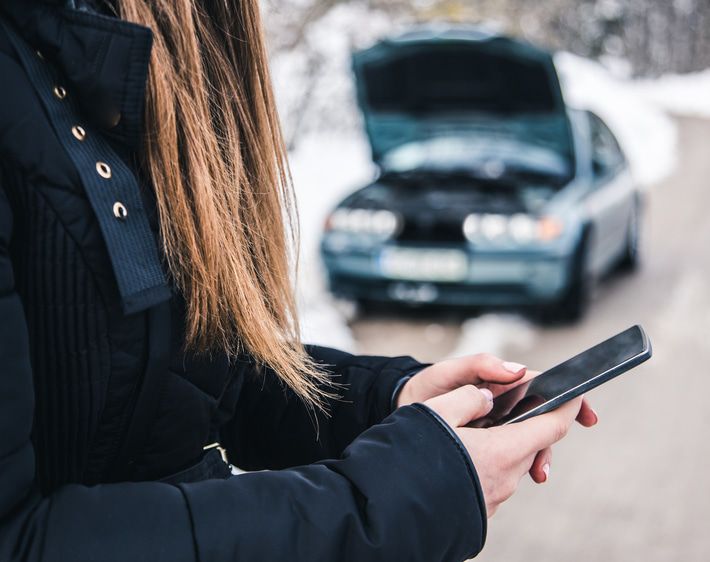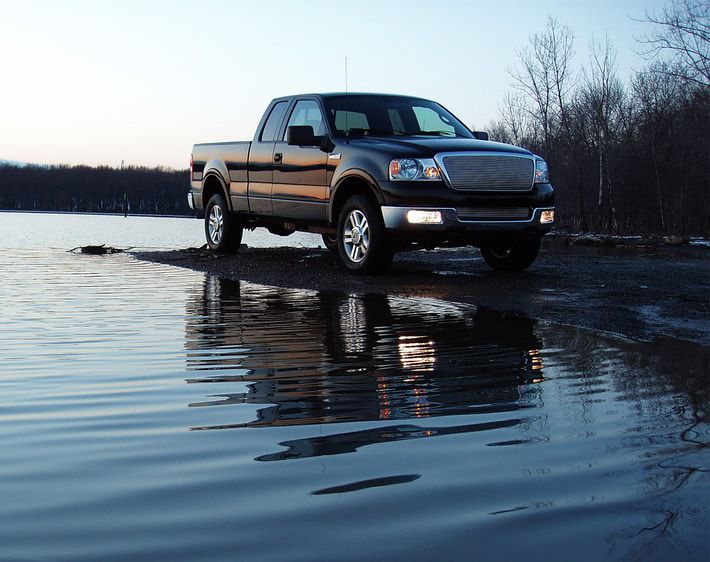Finally! The crisp, cold chill of winter has set in, bringing cozy sweaters, hot cocoa... and cars that won't start. Yuck! When there's a cold front, the last thing you want to do is bundle up and shovel snow off the driveway, only to realize your car won't fire up.
But when the temperature drops, there can be a variety of things that make it difficult for your vehicle to start. Learn how cold weather affects your car engine and get tips to help ensure you're not left stranded.
Understanding Your Car
How Does Your Car Start?
When you insert and turn the key or push the "start" button, the car's starter motor comes to life, powering up the engine with a heavy electric current it gets from the battery. When the starter motor is energized, it pushes the pinion gear out and engages with a larger gear.
When these two gears come together, they start to turn (hence the term, "turning over the engine")—activating the pistons. The pistons move up and down, sucking air into the engine. In turn, the engine computer sends fuel to the motor’s cylinders. In the cylinders, spark plugs ignite the air-fuel mixture, resulting in combustion.
Unless all these pieces and parts work together, combustion won’t happen, which means your car (and you) can’t go anywhere.
How Does Cold Weather Affect Car Engines?
Cold weather causes your car's oil, transmission fluid, antifreeze, and other essential fluids to thicken, preventing them from flowing freely through the engine. If you have worn fuel or brake lines, moisture can seep in and cause your car's fluids to freeze—which could lead to blockages that keep the engine from starting!
Additionally, cold weather increases electrical resistance, making it harder for your battery and spark plugs to do their job. At 32°F, a car's battery loses about 35% of its strength and at 0°F it loses 60%, reports AAA's Automotive Research Center via Patch. When it's cold, starting an engine can take up to twice as much current as needed under normal conditions, adds Patch.
How to Start a Car in Cold Weather
If your car is having trouble starting in the cold, don't panic! Try these methods to get it going again.
"Cycle" the Key
Make sure the radio, headlights, heater, etc., are switched to “off,” so they aren't pulling energy from your battery and engine. Now put the key in the ignition and turn it from the "off" to the "start" position about ten times. You're "cycling the key," which can help warm up the battery and starter. If this tactic doesn't work the first time, wait a minute and try again.
Still, no luck? Let's give the battery a jumpstart.
Jumpstart Your Battery
Your battery may need a little pick me up. Call a friend, neighbor, second cousin, or anyone that’ll come to your rescue and jumpstart your car. Just make sure one of you has jumper cables!
If jumping the battery gets your car moving again, swing by for a free battery check. There's a good chance your battery will call it quits again. A quick battery check will let you know exactly how much charge remains.
Call Roadside Assistance
If your engine won't turn over even after holding the key in the ignition and jumpstarting the battery, it's time to call for expert help. Call roadside assistance to get your car towed to a Tires Plus store of your choice, where our friendly technicians can diagnose and repair your car troubles.
How to Care for Your Car During Winter
Follow these tips to help prevent having a car that won't start in the cold.
Winterize Your Car
The experts at your nearest Tires Plus know how to prep a car for winter. Drop by to get your battery, tires, and essential car fluids checked. Making sure these things are ready to brave the cold can help you avoid surprises.
Pro tip: Making the switch to winter tires is a great way to help your car brave icy roads and snowed-in driveways.
Keep It Covered Overnight
If possible, tuck your car into a garage or carport overnight. Covered parking not only shields your car's exterior, but it also protects its inner workings by safeguarding essential components from extreme temperatures. Warmer fluids flow more freely, allowing them to do their jobs (such as lubricating the engine) more effectively.
Warm Up Your Engine
Letting your car idle in the morning is a hotly-debated topic. The fact is, newer models don't need to idle for five minutes. However, to avoid putting unnecessary strain on your engine, you should still let your car reach optimum temperature before picking up speed.
The current standard for heating the engine is to a) start the car, b) wait 30 seconds and, c) drive gently for the first few minutes. After a short, easy drive, most engine components should be warmed up and ready to go!
Don’t Let the Cold Stop You
Don't wait until you're stuck in the cold! Get your vehicle ready for cold weather. Visit your nearest Tires Plus for a Courtesy Check and if needed, an engine tune-up. We'll make sure your engine is prepared to fire up the first time, every time.



